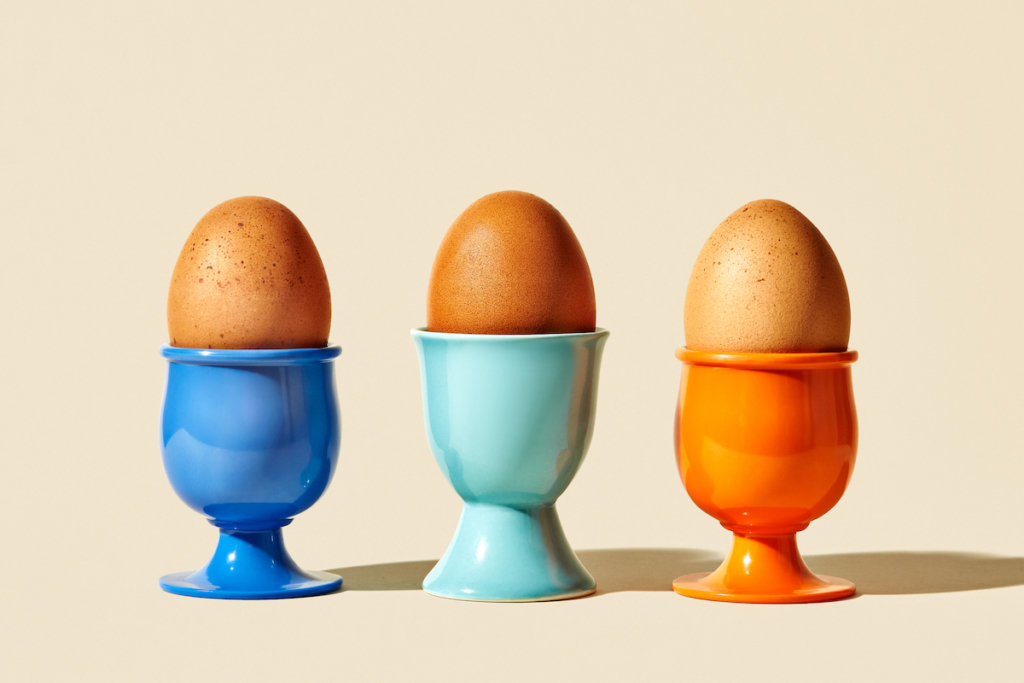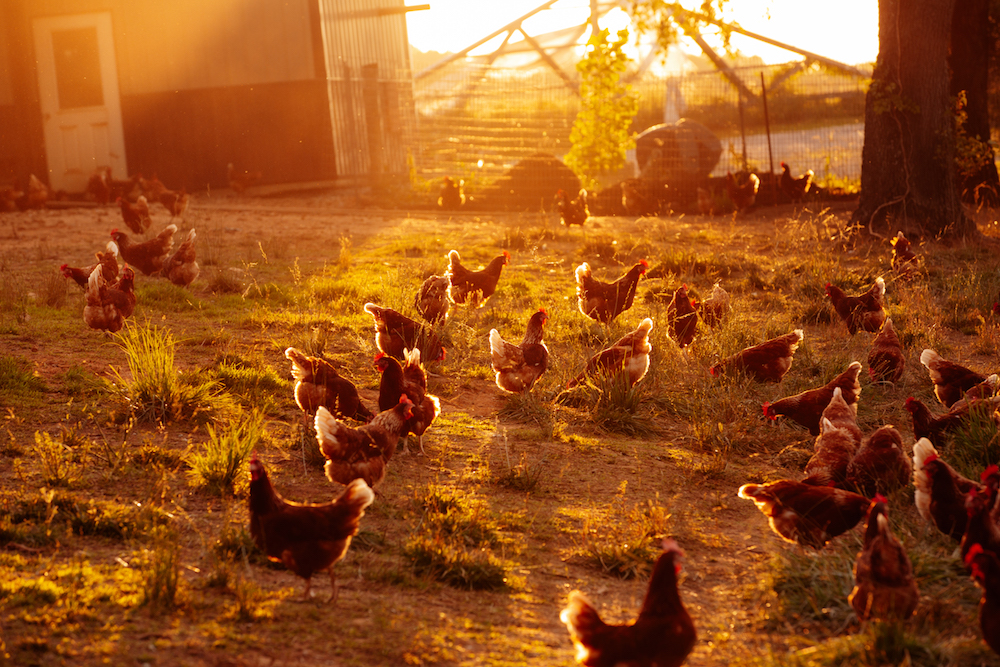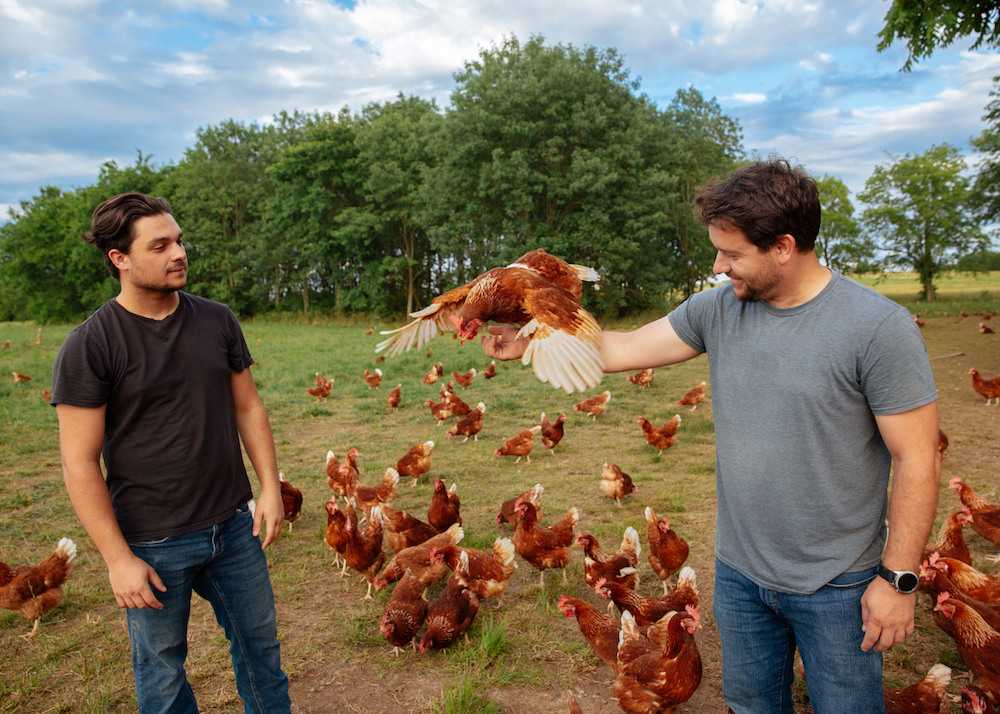
Over the course of the past few years, people have begun to eat less and less animal product in the name of sustainability. As it stands, the large agricultural systems in place are anything but sustainable in terms of environmental impact but also the well being of the animal. Ahead, we speak to CMO of Handsome Brook Farm, Matt Sherman, about the company’s sustainable practices, and how they’re revolutionizing the industry.
How Did You Start?
“We started as a small farm in Upstate New York with 5 hens. We started doing this because the guests at the bed and breakfast of the farm really liked the taste of the eggs, and then the owners had a bit of an entrepreneurial streak, and they started taking their eggs and selling them at the local farmers market. That kind of grew substantially larger to the point where they started contracting local farmers to do this, too, and selling to local supermarkets Upstate in 2007. In 2013, they had a guest at the farm who was a supply chain guy. He was like, “These eggs taste like what I have on international trips, what’s the deal here?” They got to talking about the farm network they had, and he said that “If you put a supply chain into this, you can do this incredibly efficiently, and in a way that’s much more respectful of the hen, the environment, and the farmer. And, if we get this kind of product to the consumer, everyone wins.” So, he came back a week later and invested in the business.
That, I sort of think of as chapter two, and that’s where we’ve been since then. The system we’ve developed, based on that idea, is if you take these small family farms and make sure that they’re all organic and pasture-raised, you’re doing a couple things, on a sustainability level.”
How is the Current Farming Industry Not Sustainable?
“I think to understand sustainability, you have to first understand the scale of the rest of the industry. In the US there are, on any given month, about 330,000,000 layer hens just laying eggs. There is a hen for every man, woman, and child in the US, and, in any given month, that flock lays about 9 billion eggs – which is enough for everyone in the world, and some can get two. So, you have to see what we do in the context of something much larger, and understand what that means.
What [the industry] set up is basically an industrial system for farming. We get as many hens in a room as possible, we make the room as reasonably big as possible, we get them to lay as many eggs as possible, then we pack them on site, get them into a truck, and ship them somewhere. It uses a lot of energy, it uses a lot of water, it doesn’t use a ton of land, but it’s also terrible for the farmers because the investment is massive. Most of these cage-free farms cost upwards of 40 million dollars and each barn house houses over 150 to 350 thousand hens a month. One of the largest organic cage-free farms in the US is in Michigan holds a little over 1.6 million hens. That is not what you think of when you think of organic, sustainable farming.
You have this massive market that’s designed for scale: the most eggs physically possible at the lowest possible cost. They’ve been very successful at meeting this goal, but at the end of the day, the side effects have been environmental degradation, high energy usage, massive capital expenditures, and poor animal welfare . We’ve designed a system that is much better for the environment, the farmer, and the hen, and produces a better product. Are we as cheap as the white shell egg you grew up on in a styrofoam carton? Absolutely not, and we shouldn’t be. We should really question why an egg costs 10 cents. You wouldn’t buy a chicken, a piece of sushi, or any other protein for 10 cents and assume, “This is high quality, let’s do this twice a day.” It’s just a very weird scenario, so we think we found a way to find a much more sustainable product at a much better price – 3 or 4 bucks less than what you get at your farmers market – because we’ve built efficiencies in the system.”

What Do You Do Differently?
“One, you are sequestering all of this land as organic, which means that it’s not sprayed and there’s no chemical treatment. That’s important, because a pasture-raised setting requires a lot of land. The standard is 108.9 sq ft of land per hen. If you have a bunch of hens on that land, it requires a lot of space, and it’s something that the 1.6 million hen farm in Michigan can never do because they’d need just a ridiculous amount of land.
Secondly, you have to have all organic feed. In addition to what hens find on the pasture, we feed them extra because some days it rains, some days it’s cold, so they don’t feel like going outside – they want to hang out in the barn and watch Netflix and do whatever they do. That means that the food they eat also has to be sustainable. For our system, it takes 135 square miles of feed production in order to service these hens. Plus, because these farms are smaller, they take a lot less to heat and cool them, a lot less to light them.
Also, [these farms are] run by families and their kids who are walking through the barn, collecting and packing the eggs. The family cares for them, the kids are super engaged in the process, and it’s really amazing. So you begin to build this system with sustainable land that’s relatively low impact, and the question becomes, “How do I get these eggs to a farmer sustainably?” I think that’s been the real secret to our success, because we cluster them in regions, and we pack them locally. What that allows us to do is actually cut as many road miles out of the process as physically possible, because food in America is, at the end of the day, logistics. Like, how do we get bread baked in New England to a market in California. So, for us, the question is how do I collect these things as efficiently as possible, get them to the closest possible packing facility, so I can send one truck once a week to ship it. It allows these small, sustainable farms to ship nationally and serve customers like Fresh Direct, Fairway, Publix, Sprouts, and other national markets.”
How Does Your Treatment of Chickens Differ, and How Does It Affect the End Product?
I like to put it in a very human context. You were on the subway this morning, you were in a very crowded car and I had a woman who got angry at someone who was trying to leave the car – it was about to get real on the A train this morning. That’s much closer to the actual chicken farm. It’s very crowded, and they’re very competitive animals, whether they’re in a cage with seven of their closest friends, or a “cage-free farm” where they take away the cages but there are still several hundred thousand hens in a small barn. They compete for space, they compete for water, they compete for dominance. The idea of a pecking order is a real thing. In this process, you bring out a lot of their natural competitive instincts, and they get stressed out. The more space they have, the less competitive their barn structure, the more care they have, the fresher the grass, the cleaner the air. All of these things lead to overall wellness of the animal.
Fresh air, sunshine, lots of space, lots of love, low competitive barn: Those are the sorts of things that allow animals to live their best life, and as a result, produce a better product.”

Do You Partner with Farms Who Hold These Values, or Does Your Team Implement Them?
“A little of both. We try to partner with farmers who understand what they’re getting into. Some of them have raised hens before and have a farm on site that they want to use, and we fetch their pasture. Some of them have never done this before and we will assist them in barn design, construction, fence their pastures, pasture management, rotational programs – We go as deeply as we need to, and we work very closely with our farmers to do that. We partner with our farmers for the life of the flock, and then, usually two or three flocks at least. So we tend to have long-term relationships with our farmers, and that also allows us to build in things where we support them financially, help them out if a family member gets sick, if they need someone to cosign a bank loan, etc.
We also work with some outside folk to help with things like land sustainability. So we work with outside consultants, and are currently piloting a project in some of our Kentucky farms to look at additional tree planting, soil regeneration measures, and ways to use waste products as fertilizers. All of those things help improve their land, their quality of life, and for us, the overall sustainability of the network.
We want our farmers to be successful because, the more successful they are, the better it works for us. It is very much a mutually beneficial relationship, and we understand that, the better of an experience they have, the more likely we will get additional farmers who are apt to do this and are willing to make the commitment.”
What Do You Say to People Who Stray Away from Animal Products in the Name of Sustainability?
“First of all, I understand why people would want to move away from animal products in the name of sustainability. I think there’s been a lot of buzz there and, frankly, I’ve cut down on a lot of meat over a course of time.
But, I think what sets us apart is the way that it’s done. There are certain aspects to animal farming that you won’t get away from, like it requires a live animal, and at a certain point, that animal ceases to be productive and you find another use for it. For the most part, we sell our hens who are done laying for food. But, you have to be comfortable with that to begin with. And once you’re comfortable with the notion that we use animals for food, finding a sustainable way to do that actually leads you to this method of production. We’re doing the best you can possibly do in terms of sustainability, because it’s the closest thing to raising a handful of chickens in your backyard that you’re going to find in a supermarket. That’s the kind of notion you have to be able to communicate to people. It’s more than a handful of chickens, honestly, but it’s the type of care and love those animals get and how they’re supported that allow them to produce a product you can be very happy with, and doesn’t impact the environment the way large industrial farms do. We’re really proud of that.”
–
Feature Image via Heidi’s Bridge

